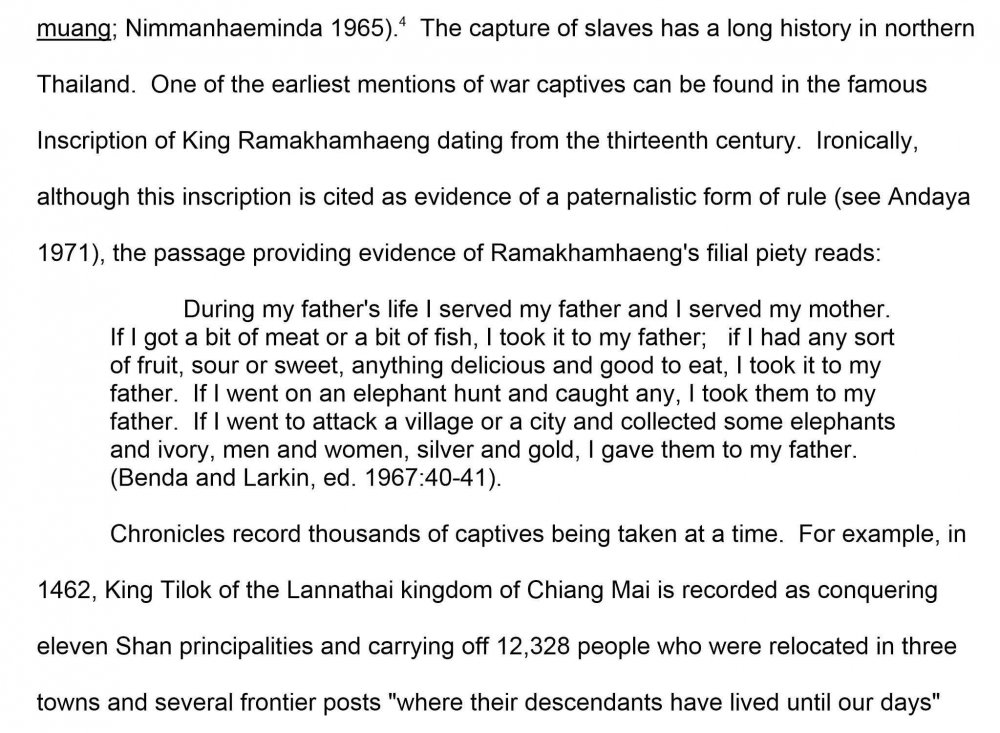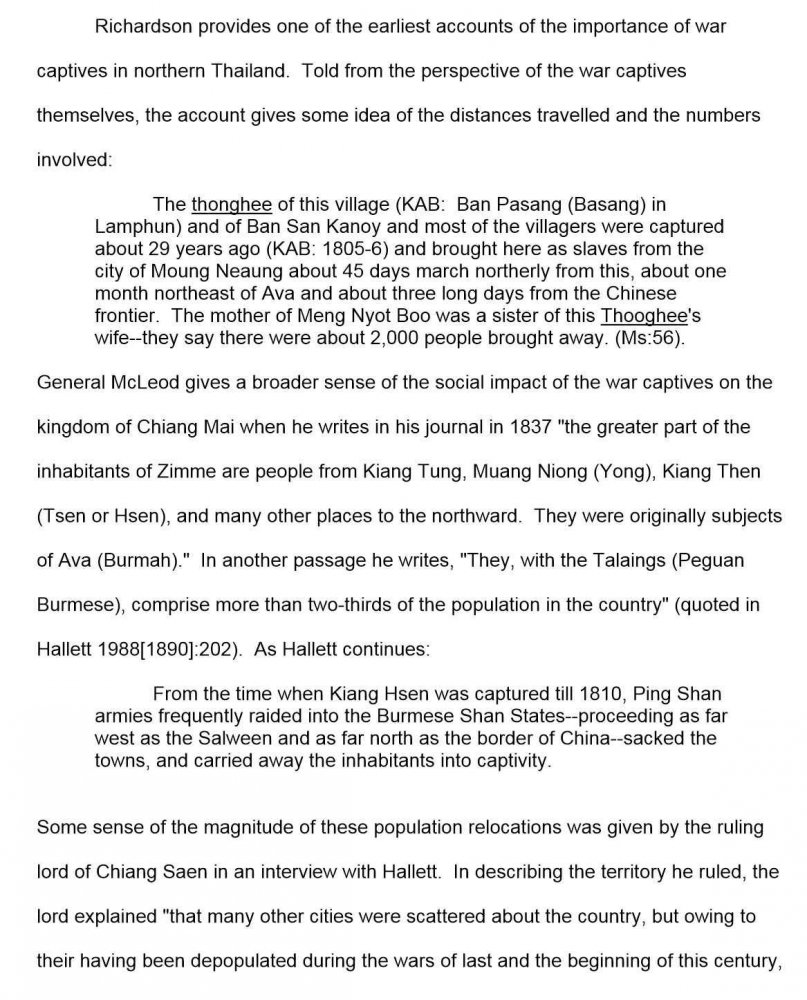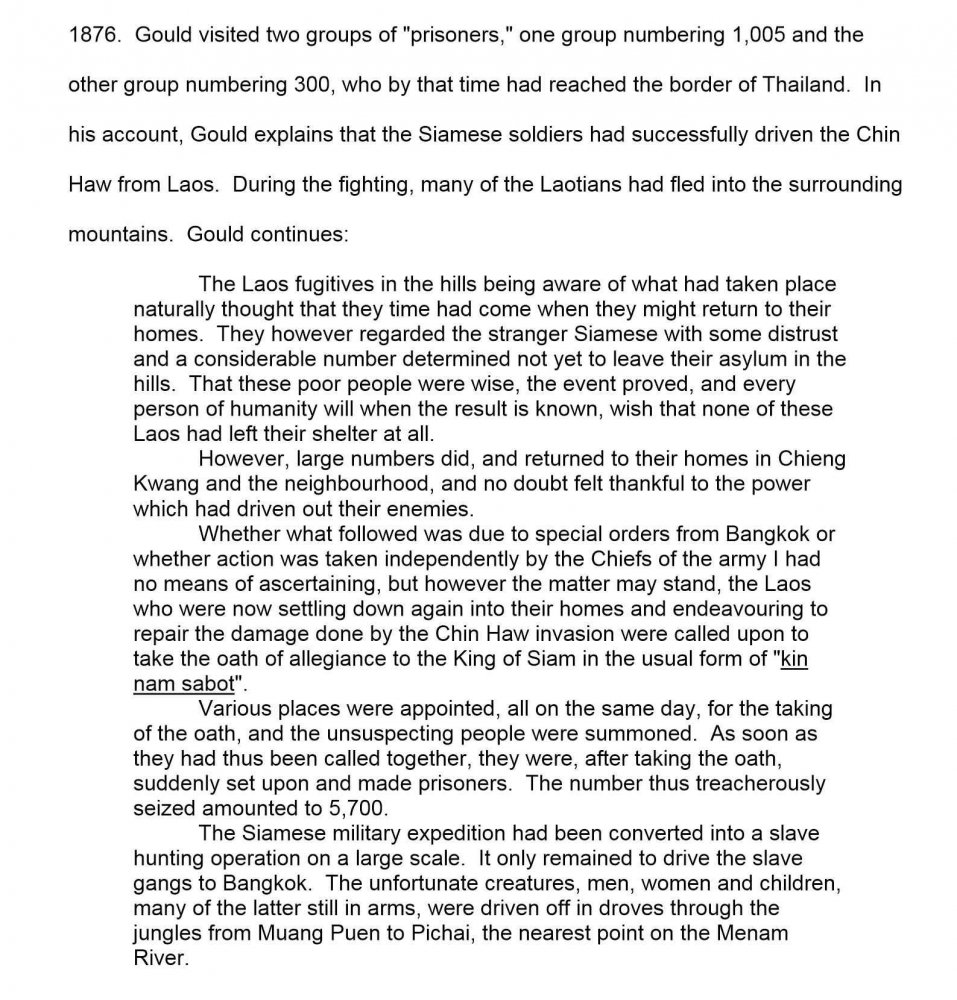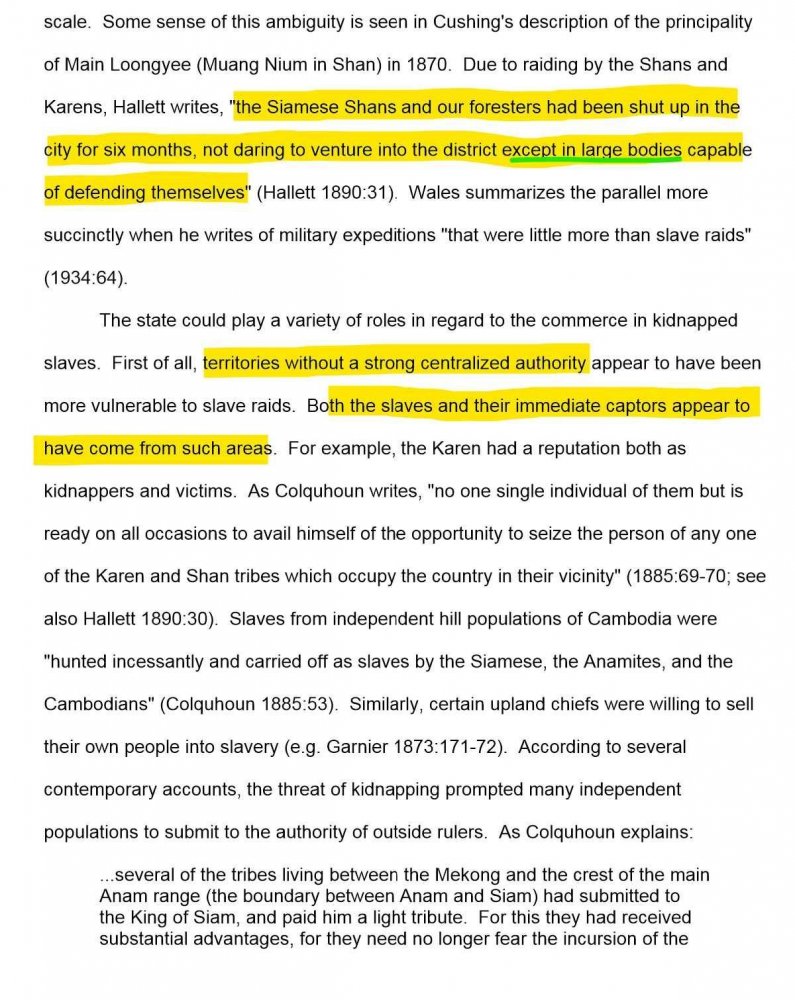Leaderboard
Popular Content
Showing content with the highest reputation on 11/22/2023 in all areas
-
Hi, new poster here sorry if I'm asking in the wrong thread! I had a question on Reddit but I prefer the environment on the forum and it gives Kevin more room to answer in depth.1 point
-
One of the interesting things in Michael Chaney treatment is that he specifically would like to erase the highland/lowland distinction that a lot of historians focus on. This, for instance, in Thai-Siam studies can be quite emphasized. Part of this may be that highland cultures may have had more of a penchant for aggression or violence in combat - for instance headhunting seems to have persisted in the highland regions much longer than elsewhere in mainland Southeast Asia, and in Siam-Thai ideology these peoples have been positioned as "savage", opposed to the high culture of the Capital and its halo of authority out to the foothills of the North. I don't really know the distribution of ethnicity, but have you noticed an cultural connection between highland (or lowland) Burmese and present day Lethwei? That is a very nice data point. My own intuition is that I have doubts about Muay Boran (or Lethwei) directly coming from combat itself, at least large scale combat tracing back to the 17th century, for example. My main reason for this is that practically every piece of evidence I've seen is that this kind of combat is not weaponless at all. Everyone is armed with blades, spear/lance and/or shield. I'm sure every rice farmer was very adept at using a blade for work. If there WAS a direct development of a fighting art for or from military actions it most certainly would have been a weaponed fighting art, and the shield would probably be a significant aspect of that fighting. We can make conceptual connections to how Muay Thai, Muay Boran or (I guess) Lethwei may be related to weaponed fighting...but that fact that it isn't weaponed fighting seriously undermines some of that historical picture. I could though see subduing an opponent being part of much smaller scale raiding, which would be largely focused on slave capture. I think this makes perfect sense. I think trends in culture and expression really change and can change fast, in a decade or two, and not necessarily reach back centuries. A big part of the ideological picture Thailand presents about Muay Thai is that it is the reason the Thais were never in historical fact colonized (the story that is told). Instead it is presented that a series of Kings through strategy were able to find ways to absorb Western influence & control, and retain a sense of ideological identity. [sorry, I wrote all this before I saw that you brought it up! But I'll leave it in nonetheless] In the Thai telling they "won" because they were smart and pliant before a formidable force, something they navigated with great sagacity. You can see how the two mythologies diverge (not making judgements on either). The brief (allied) Japanese occupation left a mark on Thailand, but largely there has been seldom a sense that a foreign invader had to be fought off (since the Burmese defeat of Ayutthaya, with possible exceptions of some of the 19th century slave capture revolts in the Northeast, and the fight against Communism in the 1960s-1970s, and today's insurgence in the South). Largely, Thailand has painted itself as "whole". Maybe this makes a big difference in terms of what fighting means to a culture. Much further up in the thread this is discussed in broad SEA historical view by Anthony Reid. He suggests that even the way in which SEAians thought about property, identity, wealth, was shaped by the transience of wooden houses. This flows into the idea of the perpetual possibility of retreat. Houses were not valuable. The land in a certain sense is not valuable (because fertile land is not scare, as say it is in Europe). Speaking very broadly, invaders or raiders would come, villagers would run to the forest and take all their valuables with them (wealth had to be transportable), and the village would be burned. He presents this as nearly a pan SEA pattern lasting centuries. When the Dutch came and established trading posts in, I think Jakarta?, they were forbidden from building anything with stone. Everything had to be made from wood, with the exception of the palace (and perhaps wats). In the sense or warfare and conflict, if Anthony Reid is right, then raid (and maybe burning) were a regular part of the life cycle, as was fleeing to the forest or mountains, and relocating one's village. The main point was not to be captured, and to escape with one's relative wealth (rice, valuables). Personally, I see in this transience of the abode something even of the foundations of the Buddhist conceptions of the transience of the Self. As the palace and the wat were made of stone, you have the contrastive permanence of spiritual and political authority. This is quite different than in the West where one's home/land helps constitute one's more individual identity much more. The "castle" of the Self, to which Western religions are more focused on. In any case, an interesting speculation.1 point
-
Yes, understood. It resonates a lot with evasive muay thai comparing it to that kind of warfare. What caught my attention is the stark contrast to lethwei which is very aggressive and forward moving. I have a limited view not speaking the language properly and lethwei teachers or students who do are very few. And Burmese people who do speak English but not too invested in martial arts have a hard time translating for me as the Burmese words used for various strikes and techniques are not self-explanatory. In addition, the sport is dominated by Karen, Mon and Kachin people with different languages. My teachers are Karen and their words for specific techniques are different than Bamar people's for example. But having trained with very traditional teachers and shared some clips with Sylvie, seems like traditional techniques I'm being taught are very similar to muay boran. So even though the sport today might seem brutal and aggressive there is something beneath what it has become known as "most brutal sports on the planet" (and promoted as by western fighters). I've been taught techniques that would pacify my opponent like stomping their foot with my heel, push my thumb into the neck of my opponent, heel kick back of opponents knee in the clinch. Things that are effective but doesn't cause too much damage. Which would resonate with your reflections on capture not kill. One thing though is that retreating is not viewed beautifully in traditional lethwei. And caused a bit of drama recently when two champions met in a title fight scored on points and one of the up and coming champions Thway Thit used a retreating style making champion Tun Tun Min chase him. Thway Thit won (very fairly he scored more) but his backing up caused debate. I wonder if it has to do with more recent history. Myanmar was colonised by Britain, occupied by Japan and since independence oppressed by the Myanmar armed forces with around 26 Ethnic Armed Organisations fighting for their independence (Karen being very successful example). During the recent coup people fought back. They wouldn't have it. They won't give up. Myanmar culture has a lot of stubbornness in it. Which I see reflected in lethwei. I might simplify your theories here by seeing how Thailand avoided colonisation, it evaded it very cleverly. I saw something you wrote about burning villages by the way, this is of course pre-Tatmadaw (Myanmar armed forces established in 1940s), but scorching earth policy is a permanent strategy of the Tatmadaw (they just keep burning down villages as im writing this). I wonder if there's a cultural root in that depicted in the illustrations? Above views are really just my own reflections and very anecdotal. I just find this region very interesting and I'm wondering how Khun Khmer and Lao martial arts fit in.1 point
-
I wonder if what is being depicted is (easily) identifiable ethnic differences, rather than just a practice. I'm feeling that the tattoos, at least at this time (late 1800s) indicated a people. I believe Burma had several warring, or at least conflicting ethnicities. Thank you for following along. It is a difficult thread, as some of this is just dropping article reference, and some posts are concept building posts. What is interesting is that all of this is very likely the kind of work that just is never attempted in relationship to Muay Thai or even combat sports/arts. The story of the development of Muay Thai is often a very simple one, with very little specific anchorage in history. And in English this story just gets repeated. But, because there is very little substantive scholarship on Muay Thai, one has to bring together diverse scholarship from other fields, and attempt to piece together a picture, create a new, richer, more complex story.1 point
-
I've been following this thread (very very interesting but takes time to understand) and have some reflections to come on myay thai fighting as avoidance of conflict. But first thing I noted of the Burmese warriors were the leg tattoos (as you point out) known as Htoe Kwin, deeply associated with lethwei. Mainly older lethwei fighters will wear them but some younger fighters have adopted the practice as well. There's a Wikipedia page on this, but the sources on htoe kwin I'm not too sure about, lots of misinterpreted, simplified info spread by Westerners due to lack of Burmese translation.1 point
-
Background reading to give a sense of the full scope of slave taking in Siam, the article below examines the historical evidence that in Chiang Mai in the 19th century by some estimates 3/4 of the population was slave, most of them taken through warfare. Because of this extensive raiding culture, and small scale kidnapping throughout Siam perhaps Muay Thai as a martial art needs to be evaluated as a developed necessary means of provincial village autonomy and self preservation, as well as a Kingdom military power. In this context the ordination of young men/boys in temples, and the teaching of Muay Thai in temples takes on a dimension of protection. This essay paints an extremely agonistic picture of life. "Slavery in Nineteenth-Century Northern Thailand: Archival Anecdotes and Village Voices" (Katherine A Bowie, 1996) PDF attached Slavery_in_Nineteenth_Century_Northern_T.pdf screen cap and, and, and, and, and,1 point
Footer title
This content can be configured within your theme settings in your ACP. You can add any HTML including images, paragraphs and lists.
Footer title
This content can be configured within your theme settings in your ACP. You can add any HTML including images, paragraphs and lists.
Footer title
This content can be configured within your theme settings in your ACP. You can add any HTML including images, paragraphs and lists.




